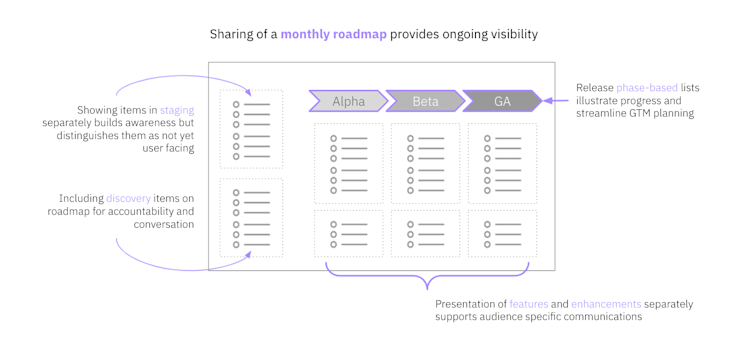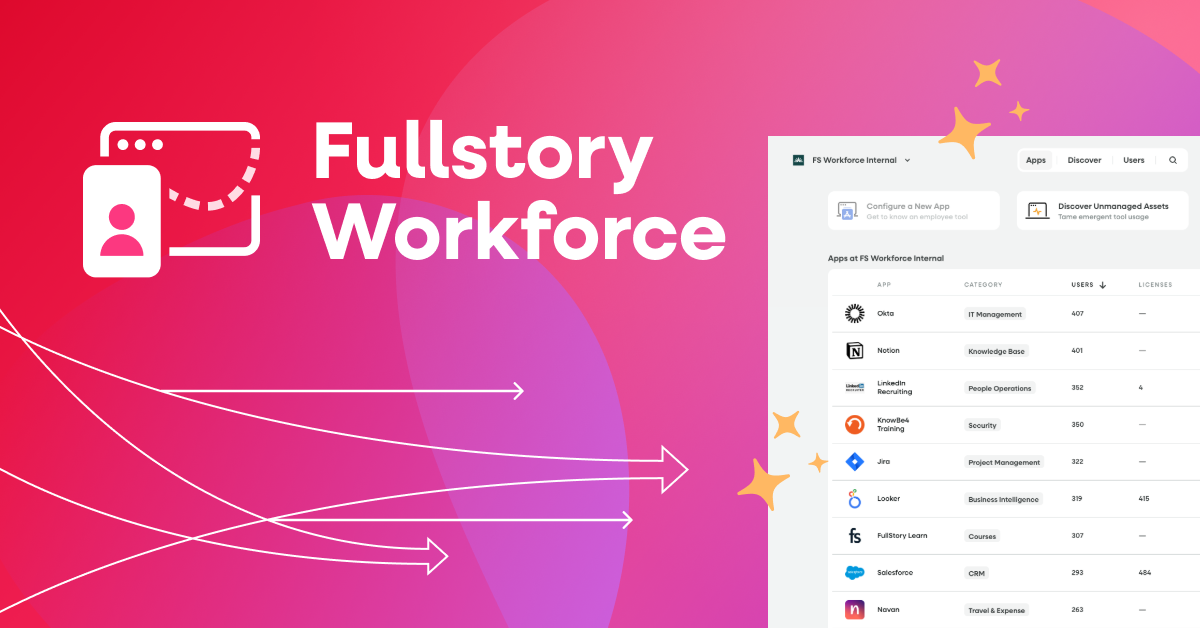As digital products become more complex and workplace dynamics evolve, the role of the product manager is shifting as well.
Which is only natural—it’s a relatively new role.
While the main responsibilities of of product managers are to identify how a product or feature will fulfill a business objective, to set goals, and to define product success, they’ve expanded beyond the product itself.
Modern product managers are expected to be masters of communication—motivating their teams and coordinating an expanding cast of stakeholders both inside and outside of the organization. Unsurprisingly, that gets complicated quickly.
While agile processes can keep product, engineering, and UX teams working in lockstep, keeping additional departments on the same page presents a greater challenge for PMs.
At this year’s Mind the Product conference in London, Fullstory VP of Product Agata Bugaj answered two big questions for the modern product manager:
What’s the right level of visibility into the product roadmap for marketing, sales, CX, support, and other teams around the organization?
How do I provide that visibility in ways that are most conducive to cross-team focus and alignment?
Read on for Agata’s sanity-saving ways to use data to keep cross-functional teams in sync by focusing on people, processes, and tools.
People: Encouraging clarity and communication
Every department has a different function and different day-to-day priorities, but certain sets of teams tend to align more organically than others.
For example, it’s probably easier to get development, UX, and product management teams on the same page because these teams tend to focus on the technical aspects of site experience or development, while marketing, sales, and customer experience teams might align because they are all outward-facing.
These natural groupings present a challenge for product managers who need to create organization-wide cohesion. How should a PM navigate product roadmap conversations with teams that are less closely related to the product itself?
The key is to communicate early and often about product roadmap updates to help each team stay focused and aligned. Communicating in bite-sized pieces prevents the need for lengthy, in-depth presentations that often result in information overload. We’ll cover more about specific communication methods in the next section.
Need tips for building a prioritized product roadmap? Here are eight techniques.
Process: Structuring your roadmap updates
Like we mentioned in the previous section, keeping the lines of communication open between teams is key to aligning around the product roadmap. At Fullstory, this takes the form of monthly roadmap updates to provide ongoing visibility and status reports.
Here are Agata’s tips for making the monthly update effective and digestible:
Release phase-based lists of what’s in alpha, beta, and GA. This illustrates progress and streamlines go-to-market planning.
Show a list of items in staging separately. This builds awareness while distinguishing them as not-yet user-facing.
Similarly, include discovery items on the list to create accountability and conversation.
Separate enhancements from features. This supports audience-specific communications.
Dedicated feature slides are useful for double-clicking into items from the overview and provide additional information as appropriate—such as feature description, KPIs, associated Slack channels, screenshots, etc.
Product managers can also provide weekly release notes to offer updates on the monthly roadmap. This practice drives alignment on user-facing teams like sales, marketing, and CX.
Tools: Collecting digital experience data
Data democratization goes a long way toward keeping disparate teams on the same wavelength by providing shared reference points and quantifiable metrics. Democratized data ensures that activities and communications—both within teams and across departments—are powered by the same information.
For the most effective understanding and analysis, teams should have access to both quantitative and qualitative data. Here’s how these two types of data are used functionally:
Quantitative data
Quantitative data tells you what is happening in your product, helping to answer specific questions and influence product outcomes. Using quantitative data at your organization creates efficiencies by allowing you to look at large sample sizes and behavioral data in aggregate—generating more insights in less time by analyzing hundreds or thousands of sessions.
This creates almost instant visibility into product issues (or successes) so teams can coordinate and act quickly.
Qualitative data
Qualitative data shows you why certain events or behaviors are happening, helping you validate hypotheses and provide direction for next steps. A major strength of qualitative research is that it isn’t bound by the same limitations as quantitative methods; if responses don’t meet a researcher’s expectations, that data adds context to whatever you’re analyzing and might even explain something that numbers alone aren’t able to reveal.
For many organizations, qualitative product data comes from a behavioal data platform and, specifically, session replay—which allows you to watch and analyze the events of every user session in your product.
For product managers, the qualitative data from DXI helps validate numbers while also weeding out the causes of certain user behaviors. Qualitative data generated by session replay has cross-departmental benefits as well:
•Developers can generate more user empathy by watching people struggle to do something in the product
• Marketers can analyze the paths users take to conversion
• Support professionals can quickly see the context of a reported issue.
Empowering teams with data
In order to be truly in sync, teams across organizations should have democratized access to both types of data to create a complete understanding of the product. This need points to the fact that product managers should ensure that their organization has the right tools in place to generate and distribute the necessary product data.
DXI tools can serve as a one-stop shop for quantitative and qualitative user and product data, creating the transparency that teams need to focus and align on product improvements.
Equip your team with the behavioral insights they need to improve the digital customer experience.
Request a Fullstory demo to get started.




